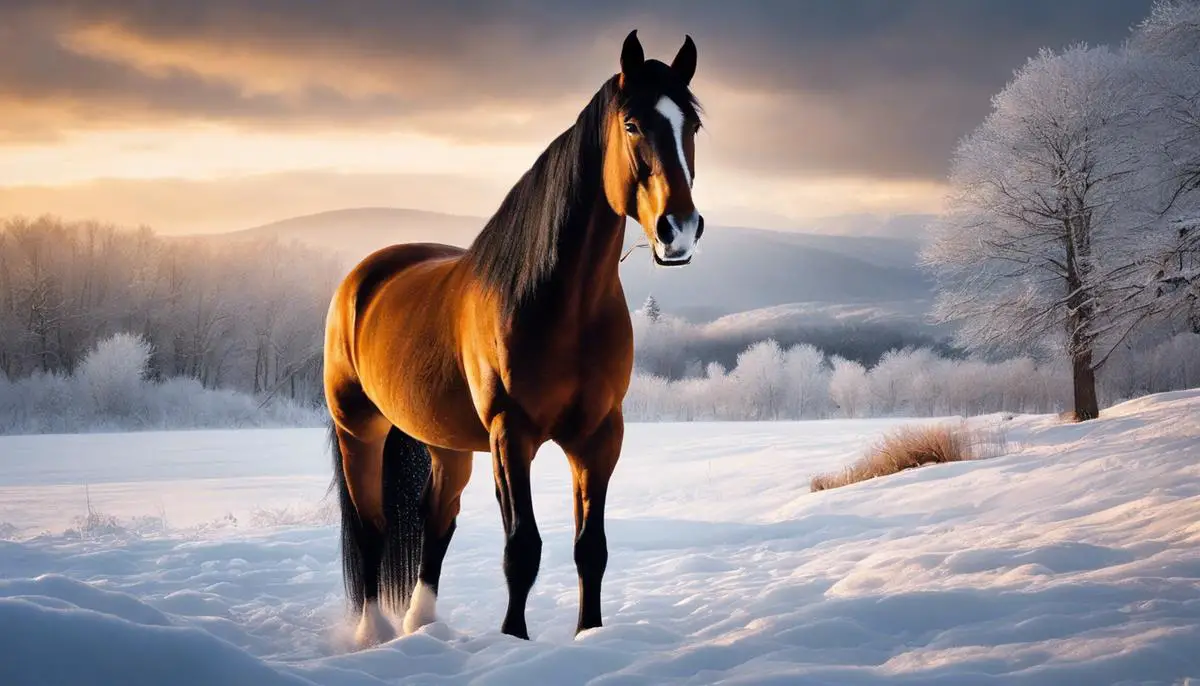Imagine the inspiring image of a herd of cold-blooded horses navigating gracefully through a blustery snowstorm, each step an act of resilience. This remarkable survival is deeply rooted in a complex and fascinating process involving physiological changes, thermoregulation, and behavioural adaptations. As we delve into the mysterious and captivating world of cold-blooded horses during winter, we will explore how these magnificent animals generate and conserve body heat, modify their behaviors, and face various health challenges with audacious bravery. With this information, we aim to better understand the issues they may encounter and the care they require, making winters more manageable and comfortable for them.
Table of Contents (Horspedia)
Physiological Adjustments in Cold-blooded Horses
Equine Adaptation to Frosty Spoils: Understanding the Thermoregulation in Cold-Blooded Horses
Amid the wild beauty of vast snowfields and icicle-accented forests, an observer may marvel at the resilience of horses nestled comfortably among winters’ freezing grip. With a serene gaze and steaming breath, a horse stands unfazed by the chill, its thick coat creating a remarkable silhouette against the frost-tinged backdrop. The resilience of these majestic creatures to fluctuating climatic conditions is truly a marvel of nature, with this particular focus being on ‘cold-blooded’ horses and their winter adaptations.
To fully appreciate their adaption, it is crucial to first expound what is meant by ‘cold-blooded’ horses. The term does not refer to the animal’s internal temperature in the same way we understand cold-blooded reptiles, as horses are warm-blooded, much like humans. In equine sectors, a ‘cold-blooded’ horse refers to a breed that was originally intended for hard labor. These breeds often encompass heavier, more muscular statures, such as the Clydesdale or the Shire horse. Residing in colder climates, these breeds have developed unique physiological adaptations to thrive in lower temperatures.
One striking characteristic of these horses during winter is their significantly thicker winter coats compared to their thinner and finer summer ones. This dense fur proves an effective barrier against the cold, insulating them by trapping warm air close to their bodies. The growth of this winter coat is primarily triggered by the decreased hours of daylight, an environmental cue signifying the approaching winter.
The position of the hairs in a horse’s coat plays a subtle but essential role in maintaining warmth. When horses are cold, the piloerector muscles in their skin contract, causing the hairs to stand erect, thus holding more warm air close to the skin surface. This minute physiological change forms the invisible yet crucial shield against the chill.
Nutritionally, horses’ diets often change to meet their energy needs during the cooler months. Energy is essential not only for their daily activities but also for generating heat and maintaining body temperature. When there is a decrease in temperature, a horse’s body will increase its metabolic rate to produce more heat, a process facilitated by additional feed and in particular an increased intake of fiber.
These cold-blooded horses also exhibit immense reliance on water for survival, even during the winter months. While it may seem counterintuitive, adequate hydration is key in preventing colic, a common but dangerous digestive disorder. Therefore, ensuring a constant supply of unfrozen water is fundamental in their winter care.
Furthermore, the herding instinct in horses plays a notable role in their winter survival strategy. Horses that share sheltered areas and huddle together can reduce heat loss, a simple yet effective tactic in the face of freezing conditions.
Through understanding these remarkable adaptations, a deep reverence blossoms for these magnificent creatures and their silent dance with winter. They are, in essence, a testament to nature’s wisdom, embodying resilience and adaptability. This offers a humbling truth: Equine physiology and behavior, much like science in general, continues to amaze, teaching us daily lessons about the nuanced ways life prevails amidst the hustle and caprice of changing seasons.
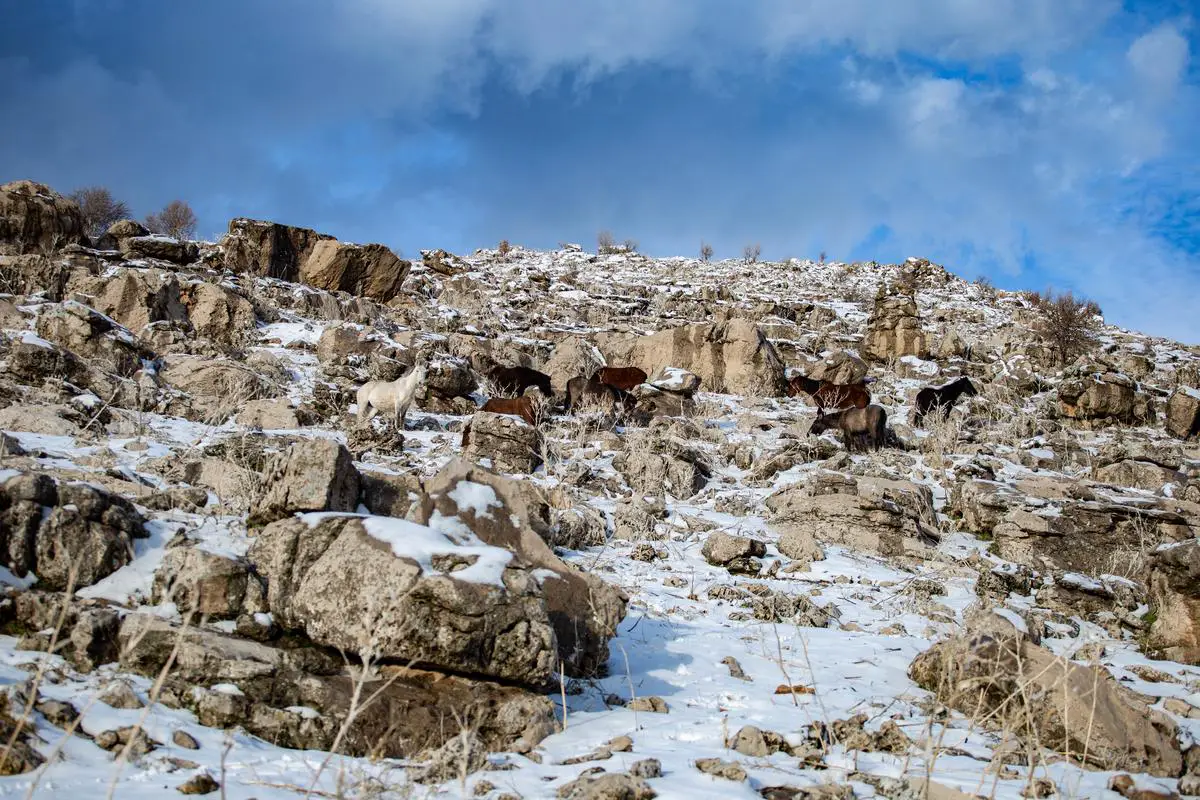
Understanding Thermoregulation in Cold-blooded Horses
Thermoregulation in Equine Winter Survival: How Cold-Blooded Horses Acclimatize
Transcending beyond the perceptible adaptations for equatorial preservation in horses, such as the strategic growth of a thicker winter coat or nutritional adjustments, the mechanisms underscoring thermoregulation in cold-blooded horses illumine the meticulous orchestrations of evolution.
Submersion in sub-zero ambient temperatures instigates a plethora of biological changes. A pivotal role is played by vasoconstriction, a physiological reaction where blood vessels under the surface of the skin constrict to conserve body heat. By minimizing the exposed blood flow and hence heat loss on the periphery, a maximum proportion of warmth is retained within the core, safeguarding vital organs.
Remarkable are the alterations within the powerhouse of these magnificent creatures – the cellular mitochondria. As we delve into the molecular realm, an increase in mitochondrial density is evident. The resultant elevated metabolic rate facilitates heightened heat production, compensating for winter-induced temperature loss.
Moreover, physiological alterations also encapsulate brown adipose tissue’s (BAT) increased activity. BAT, a specialized fat tissue, possesses a higher mitochondria content than white fat, translating to an elevated energy expenditure. The resultant excess energy dissipates as heat, contributing to the thermogenic capacity and ultimately, the internal equine thermostat.
Shivering thermogenesis, another defense mechanism, surfacing mostly under extreme cold conditions, is also worth noting. Rapid muscle contractions undergo in a bid to generate heat, a mechanism common across several animal species.
Interestingly, cold-blooded horses endeavor to harness solar energy for warmth too. They predominantly rest or graze with their backs facing the sun, maximizing the area at which sunlight can be absorbed while simultaneously minimizing the exposure of their thinly-insulated underbellies.
Consequently, detailed investigation into the myriad strategies constituting thermoregulation in cold-blooded horses elucidates nature’s marvelous commitment to survival. It is indeed a testament to the resilience of life and the inherent sophistication that permeates every level of biology.
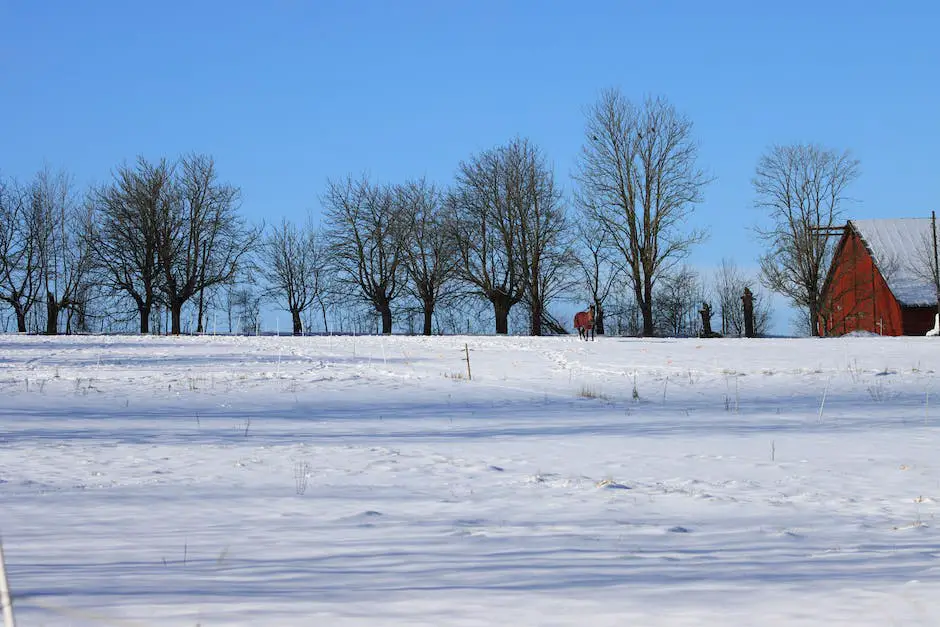
Behavioral Adaptations in Cold-blooded Horses during Winter
In the niche field of equine zoophysiology, understanding the winter adaptations of ‘cold-blooded’ horses is an intriguing feat of nature’s profound capacity. Building on insights garnered previously, our discussion diverges towards the astounding system adaptations these horses employ to triumph over frigid conditions. Every mechanism, at its core, reveals an intricate interplay of stunning complexity, demonstrating brilliance through ingenuity and unyielding resilience.
One notably intricate adaptation lies within the circulatory system – vasoconstriction, a physiological response where blood vessels tighten, reducing their diameter. By constricting peripheral blood vessels, the horse minimizes heat loss to the environment, preserving a stable core body temperature. It does, however, increase the risk of cold injuries to extremities, but remarkably, the horse’s adaptation greatly counteracts this vulnerability.
Diving deeper into cellular mechanisms, we unearth yet another significant adaptation — the increased mitochondrial density in the skeletal muscles. Mitochondria, the cellular ‘powerhouses,’ succinctly crank up heat production in cold conditions. This thermal regulation is not simply a by-product of energy conversion but a system-wide strategy to counter hypothermia.
Complementing this, we find a fascinating role of brown adipose tissue. Unlike regular fat, this tissue is richly vascularized and contains generous mitochondrial content. These mitochondria uniquely possess a protein called UCP1, which permits ‘non-shivering thermogenesis,’ allowing heat production without muscle contractions. This mechanism is frequently active in neonates but is also discernible in adult cold-blooded horses braving winter chill, lending them an added layer of defense.
Equally compelling is the behavior the horses exhibit when temperatures drop, notably shivering thermogenesis. Here, rapid muscle contractions generate heat, a powerful and immediate response in extremely cold conditions. Rationalized as energy wasteful, it remains surprisingly effective, showcasing how nature sometimes prioritizes immediate survival over long-term energy balance.
Lastly, let’s contemplate an elegantly simple behavioral response — that of harnessing solar energy. On radiant winter days, horses are often seen standing with their backs to the sun. This position optimizes the surface area exposed to sunlight, effectively turning their dark, sunlight-absorbing coats into mini solar panels. It is a testament to how even in dominating chilling winters, horses deftly augment their internal adaptations with subtle external strategies.
Perseverance in the icy grip of winter unravels an intricate ballet of precise adaptations governed by an intelligent design. The cold-blooded horses, surviving and thriving through frigid winters, offer a remarkable testament to nature’s exquisiteness and resiliency on full display. The orchestrated survival strategies, from cellular changes to physical habits, expose a deeper understanding of the marvels of equine adaptation, rekindling our sense of wonder in the face of one of nature’s most striking shows of intelligence and adaptability.
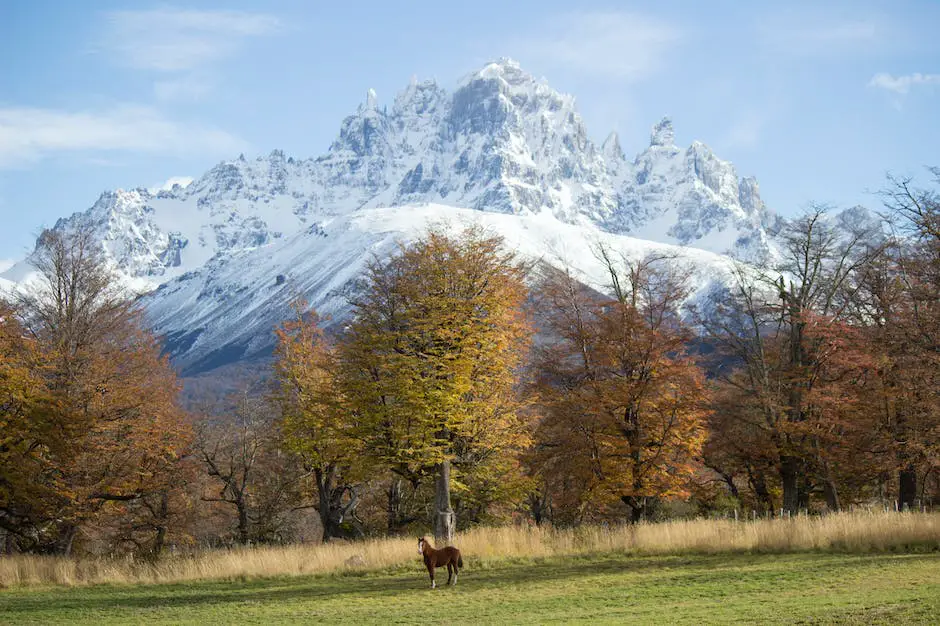
Health Concerns for Cold-blooded Horses in Winter
As we venture further into this fascinating area of study, it becomes necessary to delve deeper into the physiological adaptations that enable ‘cold-blooded’ horses to survive, and even thrive, amidst the harsh winter months.
A striking mechanism employed by these equine marvels to maintain their internal core temperature is vasoconstriction. This is a natural biological process wherein the blood vessels constrict or narrow to decrease blood flow, specifically in the peripheral parts of the body such as the skin and extremities. This response minimizes the amount of heat loss and hence promotes the conservation of core body temperature – a crucial survival mechanism for any species exposed to dropping temperatures.
Equally crucial to the horse’s survival during the winter is an increased mitochondrial density – specifically in skeletal muscles. Mitochondria, often referred to as the ‘powerhouses’ of the cell, have the primary function of producing energy in the form of heat. A higher concentration in skeletal muscles would therefore provide a valuable source of warmth during cold weather spells.
Advancing from mitochondria, the role of brown adipose tissue (BAT) in heat production requires highlighting. By being proficiently vascularized yet having a less efficient means of producing ATP, BAT is highly effective in non-shivering thermogenesis. In essence, it converts the energy stored in the form of fats directly into heat, acting as a living furnace within the horse’s body, facilitating its resilience.
Equally profound is shivering thermogenesis which should not be underestimated as a potent asset amidst the winter hardships. A horse’s ability to rapidly respond to plummeting temperatures by initiating involuntary muscle contractions provides a swift advance in the production of metabolic heat until the animal can adjust to the changing conditions.
Behavioral adaptations too cannot be disregarded. It’s observable in winter months that horses position themselves with their backs towards the sun to absorb as much solar energy as possible. As solar radiation strikes their dark coat, it is absorbed and converted into heat enhancing their temperature management strategy.
In essence, the adaptations enumerated confer a grandeur on horses as some of nature’s most brilliant and resilient creatures. Navigating harsh winters is no mean feat, but these ‘cold-blooded’ horses manage, employing a variety of intricate physiological adaptations that attest to nature’s profound dynamism and the horse’s evolutionary success. As researchers, we are just at the precipice of uncovering the equine wonders that surely lay await in the future investigation. The endeavor continues to unravel and acknowledge these profound adaptations and complex survival strategies, painting a portrait of an incredibly adaptable species that captures the very essence of evolutionary triumph.
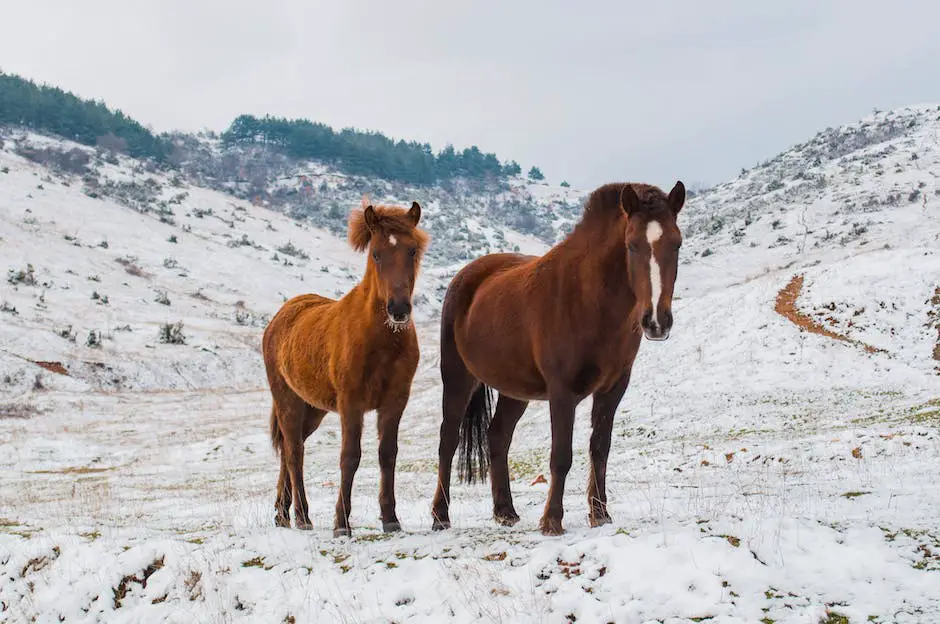
Caring for Cold-blooded Horses during Winter
In the journey further into the winter care strategies for cold-blooded horses, it becomes pertinent to address the physical arrangements and environmental modifications necessary to support their natural adaptations.
Primarily, providing shelter is of utmost importance. While horses might be hardy creatures, a safe and warm place offers them respite from winter’s harsh elements- wind, snow, and ice. In nature, horses typically utilize natural shelters such as woods or overhangs. Simulating such conditions, be it a three-sided shed or a barn, can go a long way in ensuring that the horse remains comfortable throughout the winter, primed to utilize its natural adaptations to the cold effectively.
Moreover, it is paramount to consider the horse’s bedding during winter. Straw bedding has proven to be exceptionally beneficial for cold-blooded horses. This type of bedding provides insulation from cold ground surfaces. More interestingly, straw can stimulate the horse’s inherent burrowing instincts providing an additional heat source from the microbial decomposition of the straw, subsequently generating warmth.
In addition to the above, it is also key to encourage movement for these horses during winter. By nature, horses are nomadic, free-roaming creatures and maintaining activity helps in promoting heat production, essentially from muscles’ movement. Enclosure designs and winter handling should therefore encourage activity where possible.
Physical maintenance like hoof care also becomes critical in the winter months. Horses’ hooves are likely to be impacted by cold and wet conditions which may lead to conditions like thrush, a bacterial infection that affects the hoof. Regular hoof cleaning and check-ups can help maintain good hoof health, thereby contributing to the overall well-being of the horse.
Lastly, constant access to forage should be a given. The fermentation process that occurs in the gut during digestion generates heat, thus aiding in maintaining the horse’s internal temperature. Offering an increase in forage like hay has the dual benefit of meeting their increased caloric needs in winter as well as keeping them warm.
In conclusion, when considering the care of a cold-blooded horse during winter, it becomes clear that harmonising human intervention with the horse’s natural adaptation strategies is the key to their well-being and continued health during these trying months. By doing so, we are not only prioritizing their physiological needs but are also paying homage to the remarkable resilience that these creatures display in the face of winter’s tenderness.
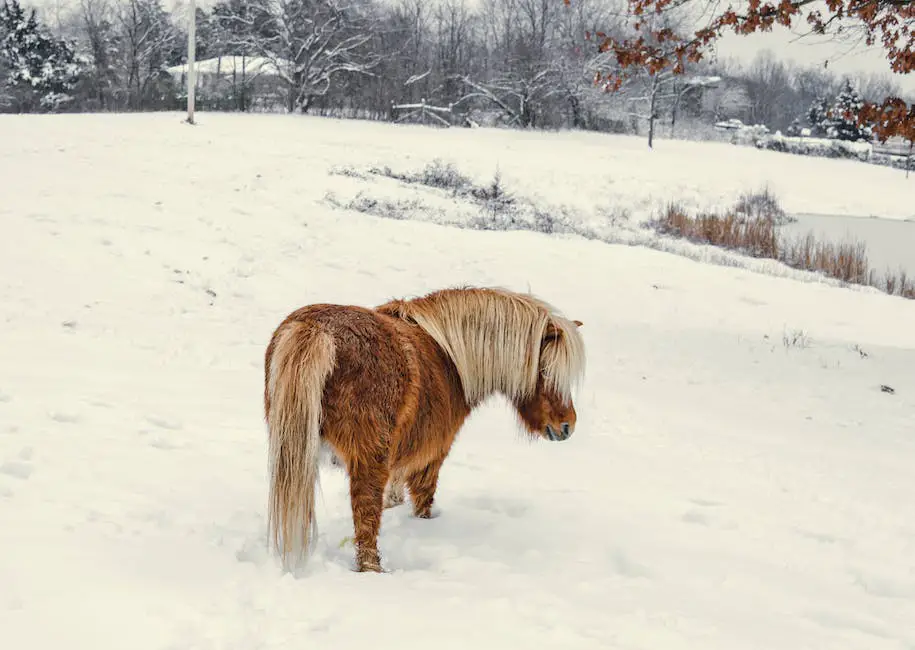
From the distinctive physiological changes to the thermoregulation process, the behavioral adaptations and the health challenges, cold-blooded horses are by no means ordinary creatures. Their unique winter journey is a testament to their strength, resilience, and the marvel of their biological evolution. As caretakers, our responsibility lies in understanding these complex dynamics, and ensuring that our interventions and care strategies are well-informed and compassionate. In doing so, we not only enhance the quality of life for these horses but also deepen our connection with nature and its extraordinary constructs. Knowledge truly is empowerment, more so when it allows us to protect and nurture these magnificent animals through the harshest of winters.
